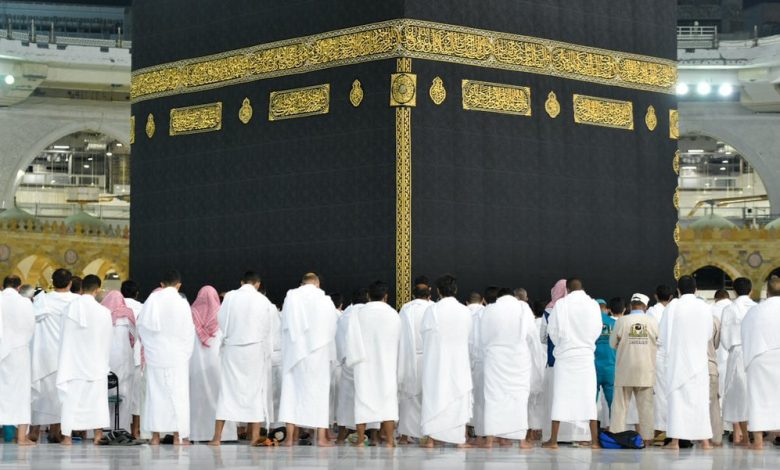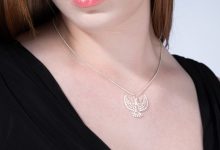
Understanding why the qibla direction is of great importance in Salah is at the heart of Muslim religious observance. This article seeks to highlight the necessity of facing the Kaaba when praying and also answer the question of whether you can look at the Kaaba while praying. We will also review some other facts about qibla.
Religious Significance of Qibla

The significance of qibla, the direction faced during prayer, holds several layers of importance in the Islamic faith:
Surrender to God:
Facing the qibla, even when the wisdom behind it may not be fully comprehended, is a test of obedience to God’s commands. It signifies the surrender of Muslims to God, trusting His wisdom even when it is beyond human understanding.
Spiritual Unity:
The qibla acts as a unifying factor among Muslims worldwide. During prayer, Muslims from various corners of the globe stand in circles, big and small, all facing the same direction. This spiritual unity fosters a sense of belonging to one another and to a central point of focus.
Connection to Hajj:
Hajj, the pilgrimage to Makkah, is one of the fundamental Islamic acts and the fifth pillar of Islam. Muslims who are not on Hajj express their wish and love for this great ritual by facing Makkah five times a day during prayer. It’s a way of repeatedly renewing their intention to perform Hajj, emphasizing their spiritual presence at the Kabah.
Direction in Life:
The concept of having a direction in life, whether physical or spiritual, is crucial. Muslims choose their religious beliefs as their guiding direction, expressing it through acts like facing the qibla during prayer. This direction provides a sense of purpose and prevents loss or disruption in one’s life.
Historical and Prophetic Significance:
Muslims face the Kaaba in Makkah, the first sacred house ever built for mankind. It was established by Adam and raised by Prophet Abraham. By facing the Kabah, Muslims connect themselves with these great prophets and the lineage that extends from Adam to Muhammad. It signifies that Islam is the true religion of God, revealed to all prophets and messengers, with its inception at the Kabah through Adam and its finalization by Muhammad.
Can You Look at The Kaaba While Praying?
So, can you look at the kaaba while praying? When in Al-Haram Al-Makki, looking towards the Kaaba while praying in Mecca doesn’t invalidate the prayer, nor is it considered blameworthy. On the other hand, the sunna recommends looking to the place of prostration, as confirmed in hadiths in Muslim and other works of sunan. According to scholars, looking front might lead to distraction while praying. Ibn Abidin explains the rationale behind this practice and states that it is based on the tradition of the Prophet (peace and blessings be upon him) and the necessity for maintaining a focused and attentive prayer.
Informed About the Correct Kaaba Direction During Salah
It is important for people in congregation and individuals to orient themselves towards the right qibla direction during prayer when they are informed on the same. Scholars of Islam provide advice to worshippers who have and don’t have information on the qibla direction and the necessity to follow the guidance of competent people or reliable sources. The importance of being observant and seeking help when needed is emphasized to make sure that the qibla oriention during Salah is correctly observed.
Locating the Qibla
There are different ways of determining the Qibla for prayer. Such include sun usage, sundial, analogue watch, the sun’s compass and modern technological equipment such as Qibla compasses and the smartphone-based applications that can accurately pinpoint the direction of the Qibla. As such, these methods are practical guidelines for Muslims to ensure that they face Makkah during their prayer time.
Conclusion
The article points out why one should face the Ka’bah during prayers and also allows us to look towards the Ka’bah while praying. It stresses the significance of worshipping towards the Qibla, and the different ways of finding the direction of the Qibla during prayer, thus ensuring correct worshipping.
Read more :
- Buyers Agent Melbourne – Decoding the Reviews and Why They Matter for Your Property Search
- Discover the Advantages of a Gunite Pool
- Building Strong Study Habits: Tips for Secondary School Students
- Resonating with Parents: Understanding the Gatekeepers of Children’s Reading
- Time is Money: Maximizing Project Efficiency through Schedule Management
-
Best eSIM for Traveling to Japan: Provider Comparison and Tips









